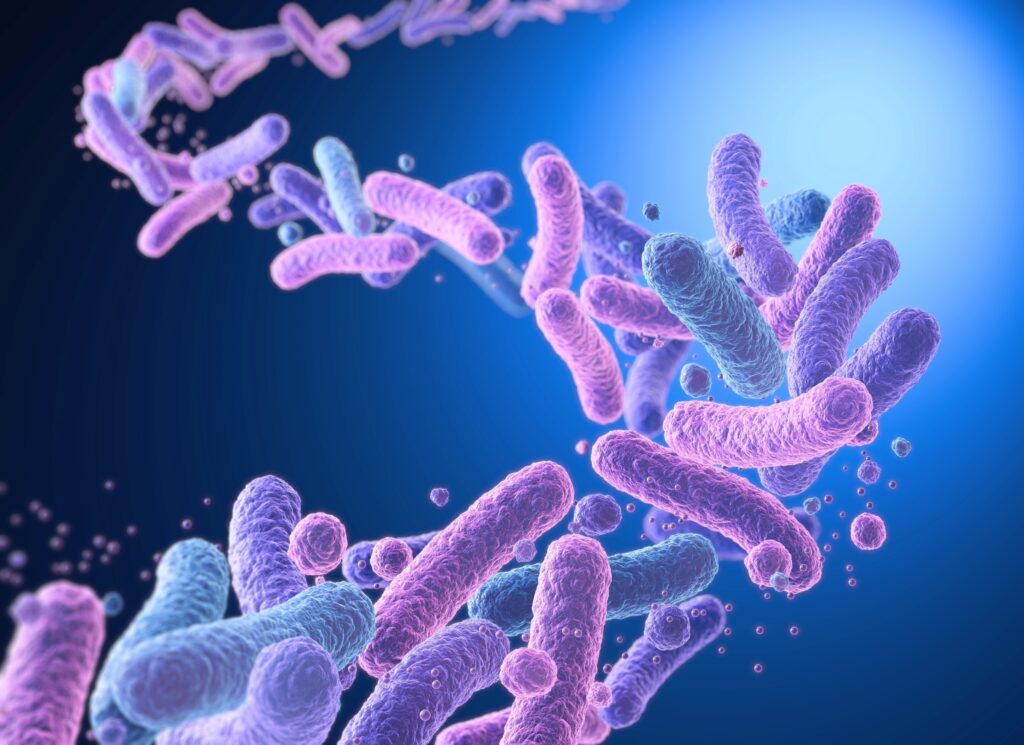
Bacteria fill your body by the trillions, especially in your gut, where they outnumber your human cells. These tiny organisms, part of what’s called your microbiome, aren’t just passive residents. Gut bacteria play crucial roles in digestion, vitamin production, and even mood and immune system regulation. However, the complexities of this system remain largely mysterious.
Why do certain bacteria persist while others do not? What makes some people’s gut microbes more beneficial than others? Could understanding these dynamics help prevent or treat diseases? A research team at the California NanoSystems Institute at UCLA has recently uncovered a significant clue.
The Role of Diversity-Generating Retroelements
Gut microbes have a unique mechanism for adaptation. Some bacteria possess genetic elements known as diversity-generating retroelements (DGRs), which function as mutation machines. These DGRs continually alter specific genes, enabling microbes to adapt to new conditions more rapidly than through regular evolution.
While DGRs are not new to science, this study marks the first time their role in the gut has been examined. The researchers focused on bacteria commonly found in healthy human intestines, discovering that about one-quarter of the DGRs targeted genes responsible for bacterial adhesion—a critical factor in colony formation. These genes control pili, tiny hairlike structures that help bacteria attach to surfaces.
In gut bacteria, DGRs continually modified the genes for pili-binding proteins, likely enhancing microbial survival in varied environments.
Horizontal Gene Transfer and Inheritance
Beyond aiding bacterial adaptation, DGRs also facilitate gene transfer. The researchers found that DGRs can move between bacterial strains through horizontal gene transfer. Studies involving mothers and their infants revealed that certain DGRs are inherited during the first year of life.
This finding is significant because the early microbiome, the bacterial community forming in infancy, plays a critical role in immune system development.
“The developing microbiome is connected to our developing immune system, and that primes us for the rest of our lives,” said Ben Macadangdang, assistant professor of pediatrics at UCLA.
Macadangdang noted that disruptions in the microbiome are linked to higher rates of chronic disease later in life, highlighting the potential to engineer the infant gut microbiome to mitigate these risks.
Implications for Health and Disease
Scientists have long associated an imbalanced microbiome with numerous health issues, including inflammatory bowel disease, Crohn’s disease, colon cancer, metabolic syndrome, and even mental health conditions like anxiety and depression. In children, an increase in harmful gut bacteria early in life correlates with a higher risk of autoimmune diseases.
This study adds to our understanding by demonstrating that DGRs are integral to how gut bacteria evolve, persist, and influence human biology from infancy through adulthood. Jeff F. Miller, director of CNSI and a professor of microbiology at UCLA, emphasized the power of these elements.
“One of the real mysteries in the microbiome is exactly how bacteria colonize us,” said Miller. “It’s a highly dynamic system intimately connected with human physiology, and this knowledge about DGRs could one day be applied for engineering beneficial microbiomes that promote good health.”
Miller highlighted the efficiency of DGRs compared to similar systems in the human body. While our immune cells can produce a vast array of antibodies once per cell, DGRs can generate mutations repeatedly within the same cell, creating far more diversity.
The Future of Gut Microbiome Research
In their study, the researchers examined gut bacteria from the Bacteroides group, a common gut inhabitant, identifying over 1,100 different DGRs. Each bacterial strain carried at least one DGR, with some having up to five. The team focused on those affecting pili genes, the structures aiding bacterial adhesion.
The DGRs’ role was to continually remix the proteins that enable pili to function, likely contributing to the bacteria’s success across diverse human hosts.
“We think DGRs allow the bacteria to rapidly change what their pili can adhere to,” said Macadangdang. “A bacterium may be optimized for one person’s gut, but if it goes out and tries to colonize someone else, it encounters a very different environment.”
The research team is just beginning to explore the potential of DGRs in both healthy and diseased guts. The ultimate goal is to harness this knowledge to engineer the microbiome, potentially using DGRs themselves, to treat diseases, boost immunity, or customize gut bacteria for improved health outcomes.
“We’re at this really early stage,” Miller said. “There are so many questions that this raises, we’re just realizing how much we don’t know about DGRs in the microbiome, or what exploiting them for applications could yield. I’ve never been more excited about what’s going to come next.”
The full study was published in the journal Science.
Like what you read? Subscribe to our newsletter for engaging articles, exclusive content, and the latest updates. Check us out on EarthSnap, a free app brought to you by Eric Ralls and Earth.com.





